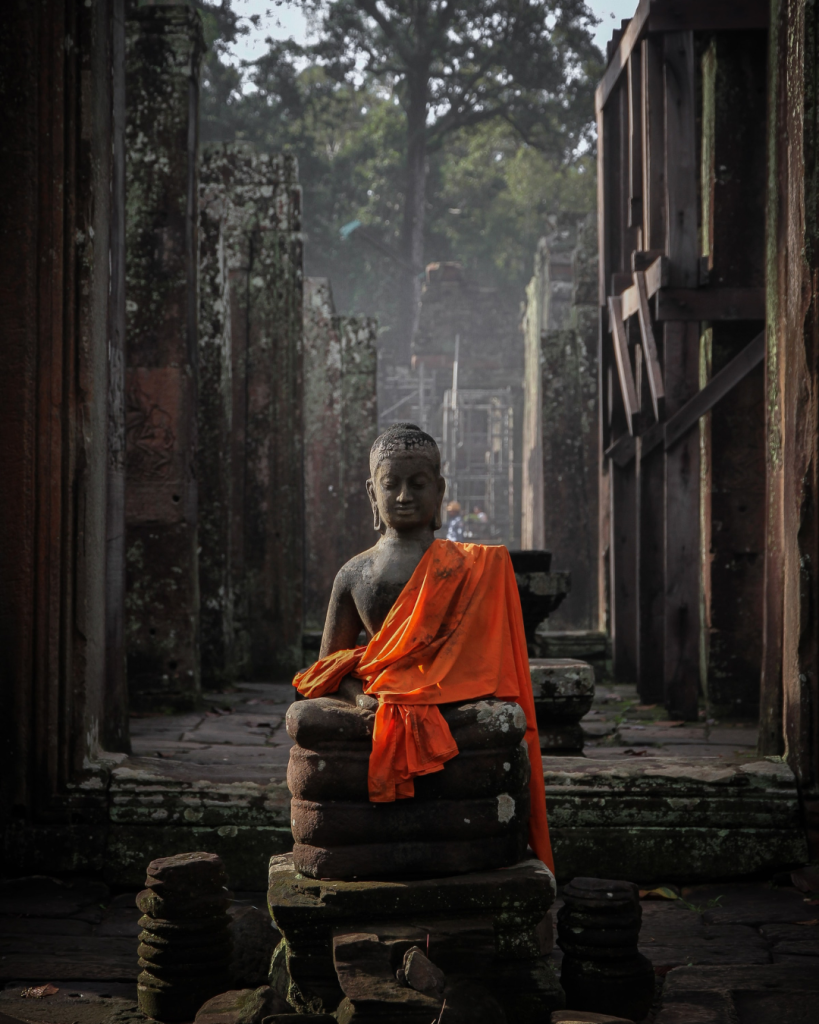
“A good city is a delicate balance between hope and memory. It must provide reassurance that a better world is possible in the future, while simultaneously respecting everything from the past that nourishes roots and identity. Therefore it must change, and it must also remain the same.”
Robert Campbell, “Boston. A Private City Goes Public”
I was in Siem Reap, Cambodia, when I read a news report dated 27th January 2023 that the iconic Rex Cinema Georgetown, strategically located at the intersection of Kinta Lane and Burmah Road, is set to be torn down for a development project involving a 27-storey condominium block. The building is heralded as vital heritage of Penang’s heyday by the locals due to its international reputation as a state-of-the-art cinema when it opened its doors in 1938.
Built at a cost of 70,000 Straits dollars more than 80 years ago, the cinema was christened by newspapers in the region at the time as being one of the best in Asia. Its unique features include an Art Deco architectural style, centralised air- conditioning and chairs imported specially from America for its 1,000-capacity audience. This was considered groundbreaking for that period—factors that should ultimately qualify Rex Cinema Georgetown for the recognition as a certified heritage building—but it was not. In view of Penang’s history and Georgetown’s Unesco World Heritage Site status, the authorities should act to protect this legacy for the future generations or risk losing another heritage building to developers. In that sense, the Penang Island City Council should take steps to halt the demolition of any site that is thought to have heritage value until it has exhausted all avenues to ensure its survival.
Alternatively, the relevant party may restore the building and turn it into an interactive public space to be used for events, or as a venue for the thriving performing arts scene in Penang. Revitalising heritage buildings and converting them into tourist destinations can create economic value for the area. As heritage tourism grows, it will support job creation, stimulate local entrepreneurial activity and generate significant tourism revenue for the state, and of course, the country. If the success of the rejuvenated RexKL—now the shining star of Petaling Street—is anything to go by, Rex Cinema Georgetown could well be the next cool event space set to breathe new life to its locality.


Given Malaysia’s poor track record in matters involving preservation of heritage and culture which include heritage buildings (Note: For the purpose of this article, due to the extremely wide definition of heritage and culture, I will only focus on buildings. Universally, a heritage building is referred to as any building aged 100 years and older with historical significance and unique narrative), I am not at all surprised reading the news on the potentially ugly fate of Rex Cinema Georgetown. I remember quite clearly how the Kedah government tried to trivialise and make light of the situation that happened in December 2013 when housing developers were caught demolishing a 1,200-year-old ancient pagoda temple, called candi, at Lembah Bujang (Bujang Valley), also regarded as the richest archaeological area in Malaysia.
Several years prior to that in 2006, another blatant act was perpetrated as we witnessed with horror the flattening of the Bok House, an old grand mansion built on a prime spot at Jalan Ampang. Designed in 1926 by Swan & Maclaren, the oldest architectural and design firm based in Singapore, it was completed in 1929 for a local millionaire, Chua Cheng Bok, the owner of Cycle & Carriage. The demolition resulted in a massive public outcry which put pressure on the administration of the then Ministry of Culture, Arts and Heritage to challenge aggrieved protesters to prove that the Bok House, located on the high-value land of KL’s Golden Triangle, also came with its own specific historical value. Amongst the list of reasons given to justify the demolition is that the Bok House was never registered as a heritage building. A strange rationale considering that the list of registered buildings in Malaysia is in fact determined by the government.
These are only two instances from many other incidents that bear witness to the unfortunate razing of heritage buildings in Malaysia. If anything, it shows that even with a specific Ministry whose responsibility is to protect the country’s common legacy accepted by the rakyat as historical landmarks, the fate of our heritage commodities would highly unlikely survive any million-dollar business proposition for the construction of new apartments or shopping malls. Always on top of it. Never around it.

I have travelled to many countries in the world that place high regard and priority in matters concerning the preservation of heritage and culture, with Portugal, Australia, Nepal and Turkey topping that list. Towards my second week in Cambodia, I learnt that the kingdom’s policy on promoting conservation and sustainable development by preventing the obliteration of heritage buildings is a decreed national agenda. The top-notch management of Angkor Wat and its surrounding area is a good example of how the brilliant synergy of culture, preservation of national heritage and tourism as a money-making industry could come together as the main contributor to a nation’s economy.
As a matter of fact, Cambodian Prime Minister Samdech Techo Hun Sen in 2021 has strategically issued a governmental circular clearly stating that, “Urban heritage, including its tangible and intangible components, constitutes a key resource in enhancing the liveability and resilience of urban areas, and fosters economic development and social cohesion in a changing environment”. An initiative highly commended by UNESCO, this big energy move is a pretty progressive take on growth strategy from a country that is only in its third decade of peace and nation rebuilding. This mandate, coming straight from the country’s number one leader has an almost Biblical effect on the people of Cambodia, one that trumps any other laws that might come before it.
In Malaysia, the duty to preserve national heritage with cultural value falls under the National Heritage Act 2005 (Act 645)—the only specific statute on the preservation of cultural heritage. During the Eighth Malaysian Plan, the development of culture was promoted to enhance national identity and to support the growth of the tourism industry. The NHA 2005 was enacted in tandem with the Ninth Malaysian Plan. Despite its many loopholes, Act 645 does provide that any person undertaking unauthorised works on “listed buildings” will be prosecuted and be liable to a maximum penalty of imprisonment for a term not exceeding five years or to a fine not exceeding fifty thousand ringgit or both.


As of December 2022, the penalty system of NHA 2005 remains untested because no one has been charged in court in relation to these offences. Also, in a lot of cases, the heritage buildings that were demolished were not “listed buildings” as defined and protected under the law. In July 2020, a colonial-style bungalow with “architectural rarity” in Fraser’s Hill was unexpectedly demolished to make way for a resort project. The privately owned heritage building is not listed under the Act, and based on Section 42 of the NHA 2005, the owner of a heritage building is responsible to keep it in a good state and that the national heritage commissioner can take action to ensure that this is complied with, in keeping with heritage values of the building.
Having said that, heritage buildings that belong to private owners are susceptible to uncontrolled reconstruction and demolition because property owners of heritage buildings tend to redevelop their properties in order to meet the greatest possible economic returns. In the context of big development projects with lucrative profits, the amount of fines prescribed in Act 645 seems insignificant. In such a case, perpetrators may simply offer to pay the fine and continue with the development project. We must advocate that the definition of heritage buildings protected under the Act be made clearer, and additional laws be enacted to allow authorities to impose significant amounts of fines and imprisonment for the illegal demolition of heritage buildings as they do in many developed countries.
The preservation of national heritage is ethical and it is the way to go, but it also needs to be sanctioned under the law of the land. Heritage buildings are important to help us answer fundamental questions about our identity and collective social roots as people of different origins living in a multi-cultural country with a colourful past. Despite its limitations, the NHA 2005 is a good start as long as the government shows sincere political will. The survival of heritage buildings in Malaysia is highly dependent on the effectiveness of the heritage legislation to overcome the hazards of modern-day development.
